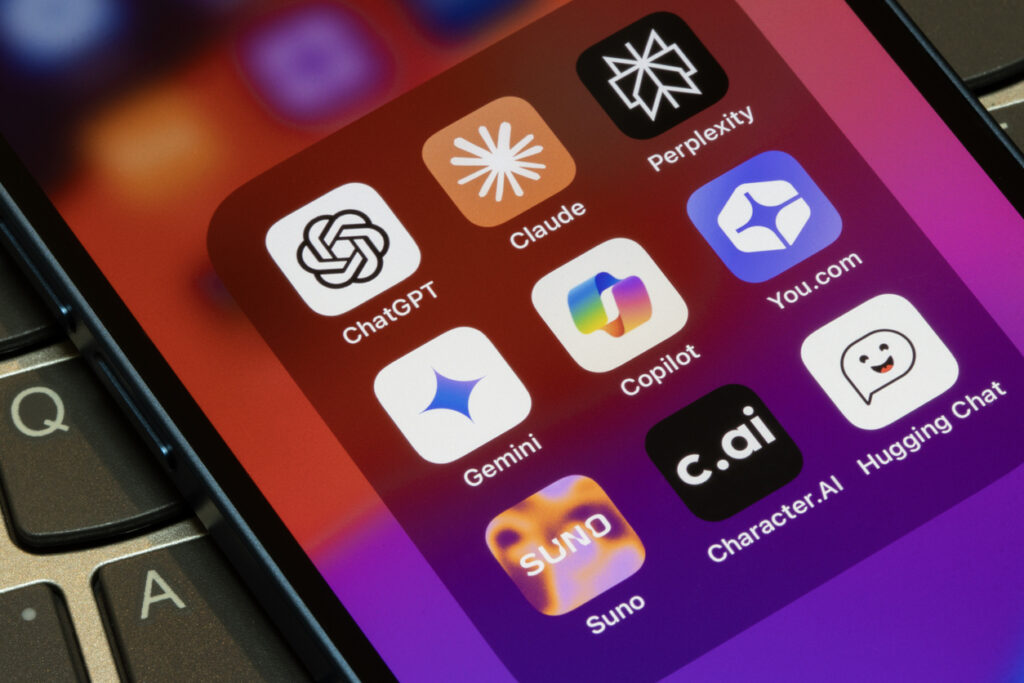With the increase in availability and use of generative artificial intelligence (AI) tools, it is worth taking a step back to the basics of IP law and consider who owns the IP in the outputs that these tools produce.
This blog will focus on ownership of copyright in those outputs, but also other IP rights which may be relevant, such as design rights.
English law as it stands – current open questions
Initial ownership of copyright in a work in the UK is governed by section 11 of the Copyright Designs & Patents Act 1988 (“CDPA”). This provides that the ‘author’ of a work is typically the first owner of copyright (or employer if the work is made during the course of employment). In English law, this author must be a real person and not, for example, the AI tool itself.
However, there is currently an open question as to just who the author in the circumstances of an output generated by an AI chatbot is, and should be, if anyone at all.
Is there any copyright in the output at all?
Copyright will only subsist in an ’original’ output, i.e. one that is not copied and one that is the ‘author’s own intellectual creation’. This is based on EU caselaw, where it has been further explained that the content needs to:
- reflect “human personality”;
- result from “free and creative choices” and the “author’s personal touch”; and
- not be dictated by technical considerations, rules or other constraints.
Where an output has been generated as a result of the AI tool having trained itself based on third party sources (for example the output was generated as a result of the AI tool having already analysed many existing copyright works, such as bodies of text or images already existing online), there is an open question as to whether that output can ever be sufficiently ‘original’ so as to benefit from copyright protection at all.
Even if it the output is seen as original or ‘not copied’, there is the question as to whether the output is the ‘author’s own intellectual creation’. This could depend on the level of input that the user has and how the AI tool works. For example, a tool which generates an initial image or text as a result of a detailed prompt, and where the user then edits that output using various other tools would be more likely to meet the copyright requirements than if the user simply inputted a basic prompt and did not edit the end output.
However, there are many different factual situations that lie between these positions, and each situation would have to be assessed based on the detailed facts.
Is the output a computer-generated work?
Section 9(3) of the CDPA also provides that, in the case of a literary, dramatic, musical or artistic work which is “computer-generated”, the author shall be taken to be the person by whom the arrangements necessary for the creation of the work are undertaken. Section 178 of the CDPA defines a computer-generated work as being where the “work is generated by computer in circumstances such that there is no human author of the work”.
The determination of who the author is where there is no human author (e.g. if the user is not found to be the author using the test set out above) is also unclear. For example, would the person who made the ‘arrangements necessary for the creation of the work’ be the designer of the learning algorithm that the AI tool uses, or the person who trained the system?
Of course, there could be many people involved with each step, resulting in there being multiple joint owners of copyright, and again there would need to be a decision made based on the detailed facts in each case. However, there are many difficulties when dealing with jointly owned copyright, relating to exploiting the work, enforcing the rights, and making decisions.
Developments in the US and the EU
What’s happening in the US?
The U.S. Copyright Office has previously determined that particular images generated by an AI image generating tool as a result of prompts inputted by the user were not protected by U.S. copyright law at all, as such outputs lacked sufficient human authorship.
However, the recent Part 2 of the US Copyright Office Report on ‘Copyright and Artificial Intelligence’ provides that the use of AI tools is not strictly a bar for copyright protection of the output in every case, and so there is again a need for a determination based on the facts as to whether there is sufficient human control over and input into the output.
Evidence that this subject continues to be a moving target can be shown by two diametrically opposed recent decisions in the US. In January 2025, the US Copyright office registered an image entitled “A Single Piece of American Cheese” created entirely by AI. Two months later, the US Court of Appeals (Washington DC) found that an image created by the DABUS AI model was not entitled to copyright protection and that creative works must have human authors.
The US Copyright Office has announced that a Part 3 of AI guidance will be forthcoming, which is intended to address the legal implications of training AI models on copyright works, including licensing considerations and potential liability.
What’s happening in the EU?
In the EU, at present, the position is that protection is only granted to works created by a human author.
As to the treatment of copyright works by AI models, the EU Artificial Intelligence Act came into force on 1 August 2024 and will be largely applicable by August 2026. The text provides for AI systems such as ChatGPT, and the models they are based on to have to adhere to transparency requirements. These include:
- the preparation of technical documentation explaining how the model has been trained;
- how the model performs; and
- how it should be used.
The AI models will need to comply with EU copyright law (particularly the need to obtain authorisation from or enable content owners to opt out from the text and data mining of their content) and disseminating “sufficiently detailed” summaries about the content used for training.
Specific chatbot terms and conditions relating to IP ownership
The above default rules on first ownership of copyright are subject to terms and conditions that provide otherwise. However, any such terms cannot determine whether there is any copyright subsisting in the output, as they can only deal with the ownership of such rights if copyright does subsist.
The OpenAI terms of use apply to the use of text generating AI chatbot ChatGPT and text-to-image model DALL-E. The version of the terms of use effective on 11 December 2024 provides:
Ownership of content. As between you and OpenAI, and to the extent permitted by applicable law, you (a) retain your ownership rights in Input and (b) own the Output. We hereby assign to you all our right, title, and interest, if any, in and to Output.
While this appears to be clear in providing the user with any rights in the output, even if OpenAI is the ‘author’/’first owner’, this is only subject to the extent permitted by law. Therefore, if English law ultimately provides that there is no copyright in the output for example as a result of it failing to meet the originality test, then the user will have no such rights despite this wording in the terms of use.
Interestingly, Microsoft’s FAQs relating to CoPilot states that it does not claim ownership in the outputs, but also recognises the problems discussed in this blog in relation to determining whether there is any copyright in the outputs at all:
Microsoft doesn’t claim ownership of the output of the service. That said, we don’t make a determination on whether a customer’s output is copyright protected or enforceable against other users. This is because generative AI systems may produce similar responses to similar prompts or queries from multiple customers. Consequently, multiple customers may have or claim rights in content that is the same or substantially similar.
The potential future position in the UK
The UK government ran a consultation at the beginning of the year on copyright and AI, with its key focus on the wider use of copyright materials to train AI models in the UK whilst providing copyright owners with an opt-out to prevent unauthorised use.
The consultation has also been looking at copyright ownership of AI outputs, with the very real possibility that the government will remove the specific protection for computer generated works with a view to it being brought closer to the position in the EU.
Outside of new legislation, we are waiting for the UK court to consider the case of Getty Images (US) Inc v Stability AI Ltd on the issue of whether Stability AI has infringed Getty Images copyright by:
- Downloading and storing copyright works on servers in the UK during the development and training of the Stable Diffusion AI model; and
- Making Stable Diffusion available in the UK by which it provides the means for using text and/or image prompts to generate images that infringe Getty Images’ copyright works.
Key takeaways and next steps for UK businesses
If your business is currently, or is considering, using AI tools as part of its daily activities, then you should consider the following points arising from the above review of the current status of the ownership of AI tool outputs:
Audit current use of AI tools within your organisation. It’s important to consider how widely, and which, AI tools are currently used in your company, while also appreciating that this is likely to increase in the coming years.
Consider and communicate the implications of using AI generative tools. It’s important for those who use these tools to understand the implications in terms of ownership of IP in the outputs and what further use may be made of the outputs.
Review your internal policies. Consider your internal policies regarding which AI tools are permitted or recommended for use by employees. Such use may, for example, be only permitted relating to specific tasks – i.e. not tasks that would ordinarily lead to outputs in which it is important for you to retain all of the IP rights, and not want those outputs to be used as a basis for the generation of outputs for other users. This is particularly important if the user ‘inputs’ may potentially contain confidential information.
If you are using AI tools in your business, and are unsure about your IP position, our specialist team can help you make sense of the evolving legal framework and advise on the best way forward.





